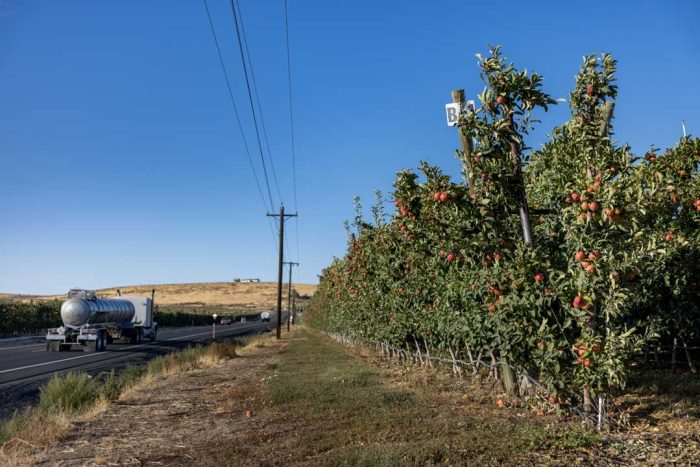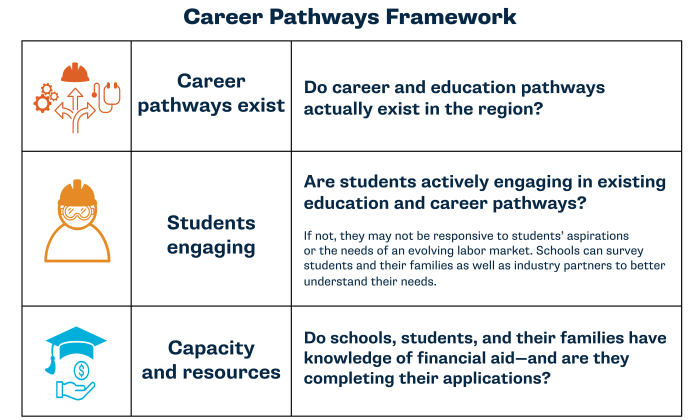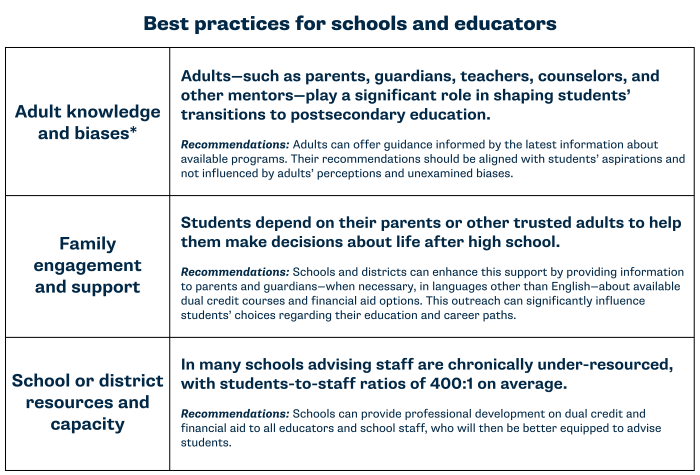Career Pathways Framework: a tool for clearing the way to STEM-literate jobs

A letter in the mail
Each year parents of 6-8th graders in the Yakima Valley receive a letter with some great news: their children may be eligible for the College Bound Scholarship. This year, the letter is being translated into Spanish as well as English. In another district, a school administrator prepares a newsletter for parents about upcoming dual credit programs, like Running Start or College in the High School.
Some school districts are making a more concerted effort to share information with parents about dual credit courses and financial aid information in order to reduce inequities in how students earn college credit before graduation.
“Not surprisingly, students who earn dual credit are more likely to continue their education after high school and learn the STEM skills needed for in-demand jobs,” said Washington STEM Career Pathways Program Director Angie Mason-Smith.
Currently, less than half of high school graduates in Washington enroll in postsecondary education or job training programs—despite the fact that research shows the vast majority of students say they want to continue their education. Research has shown that most Washington high school students find jobs within 50 miles of where they grew up. But if their region has limited career-connected learning opportunities, businesses must seek employees from outside their region.
So, what’s the comprehensive view?
Although schools and industry in some regions are building programs to meet industry needs, there is no comprehensive system in place to ensure students have the kind of education and job training in their home regions that leads to in-demand jobs. But Washington STEM is working to address this.
Working with network partners across the state, we developed the Career Pathways Ready System Framework (or Career Pathways Framework) to help schools and districts identify and fill gaps in their career-connected learning programs. In short, the Framework prioritizes three pillars of a “career-ready” system needed to help students launch their careers: pathways exist, students engage in these pathways, and schools have capacity and resources to support students.

Mason-Smith said, “There are many things that help students on their journey–but we prioritizing these areas. And if we do them in relationship with each other, it creates conditions for success.”
Assessing staff capacity and outreach efforts:
After developing the framework with our statewide partners, they started testing it. This means sharing the framework with schools and learning about their current pathways, student engagement, and school resources. But we also asked: how is the Framework implemented?
Alma Castillo, South Central STEM Network’s career readiness coordinator, was about to find out. One afternoon last spring, Castillo met with a staff member from a Yakima-area school district. Their mission? To assess how the three pillars were at work in the district, asking: what pathways exist? Were students engaging with these pathways? And what capacity do schools in the district have to support students, especially when it comes to financial aid counseling?
Then Castillo and the school district staff member did a deeper analysis of each pillar, seeking to understand how educators, teachers, adults, counselors and students and their families, are impacting these systems. The Framework gets at this by asking about adult knowledge and bias, family engagement and support, and school resources available for each.

Castillo said this led them to consider the question, “Is there enough capacity and support in schools and community-based organizations to support FAFSA completion?”
“This is where we see a lot of “ah-ha” moments at the school districts. They already do a lot to support students-but not necessarily with parents–and those trusted-adult relationships are crucial to effective postsecondary planning.”
-Alma Castillo, Career Readiness Coordinator at South Central STEM Network
“Yes”, they decided, pointing to the local institutions and resources: the South Central STEM Network, and some federally funded programs that support college and career readiness like, Gear Up, College Success Foundation, and the University of Washington Advising corps and staff at ESD 105 Migrant Services, who conduct outreach with students whose parents are migrant workers. Castillo said it felt good to map the existing resources. But what about outreach to families? Castillo found that using the Career Pathways Framework can prompt schools to do some introspection into how they engage with families.
Castillo said, “This is where we see a lot of “ah-ha” moments at the school districts. They already do a lot to support students—but not necessarily with parents–and those trusted-adult relationships are crucial to effective postsecondary planning.”
Castillo noted that family engagement can be challenging, but there are community-based organizations that do this really well and have best practices to share.
She said, “By changing how schools reach out to families, not only are we informing the latter about opportunities, but we are building capacity among school staff as well. That is the kind of school-level change that can impact generations of students.”